As its name implies, the Toyota 3VZ-E engine is part of the Japanese carmaker’s VZ engine family. This V6 lineup was created as a direct response to the Nissan VG30 engine.
The VZ engine was Toyota’s first V6 gasoline engine and ranged from a mere 2.0L to a more respectable 3.4L displacement.
While there were both SOHC and DOHC configurations, the 3VZ-E we’ll discuss here was only sold as an SOHC unit.
Introduced in 1988, the Toyota 3.0 V6 3VZ-E engine was used in the brand’s utility vehicles, and for the first time, these models were powered by an engine with more than four cylinders.
Unfortunately, the Toyota 3VZ-E wasn’t exactly powerful, nor has it earned a reputation of being particularly reliable.
If anything, it’s quite the opposite, and if online forums are anything to go by, it’s easy to think it’s best avoided.
However, all is not lost, and in this article, we’ll take a look at its specs, reliability issues, and what can be done to improve upon this infamous Toyota engine.
Toyota 3VZ-E 3.0L V6 Specs
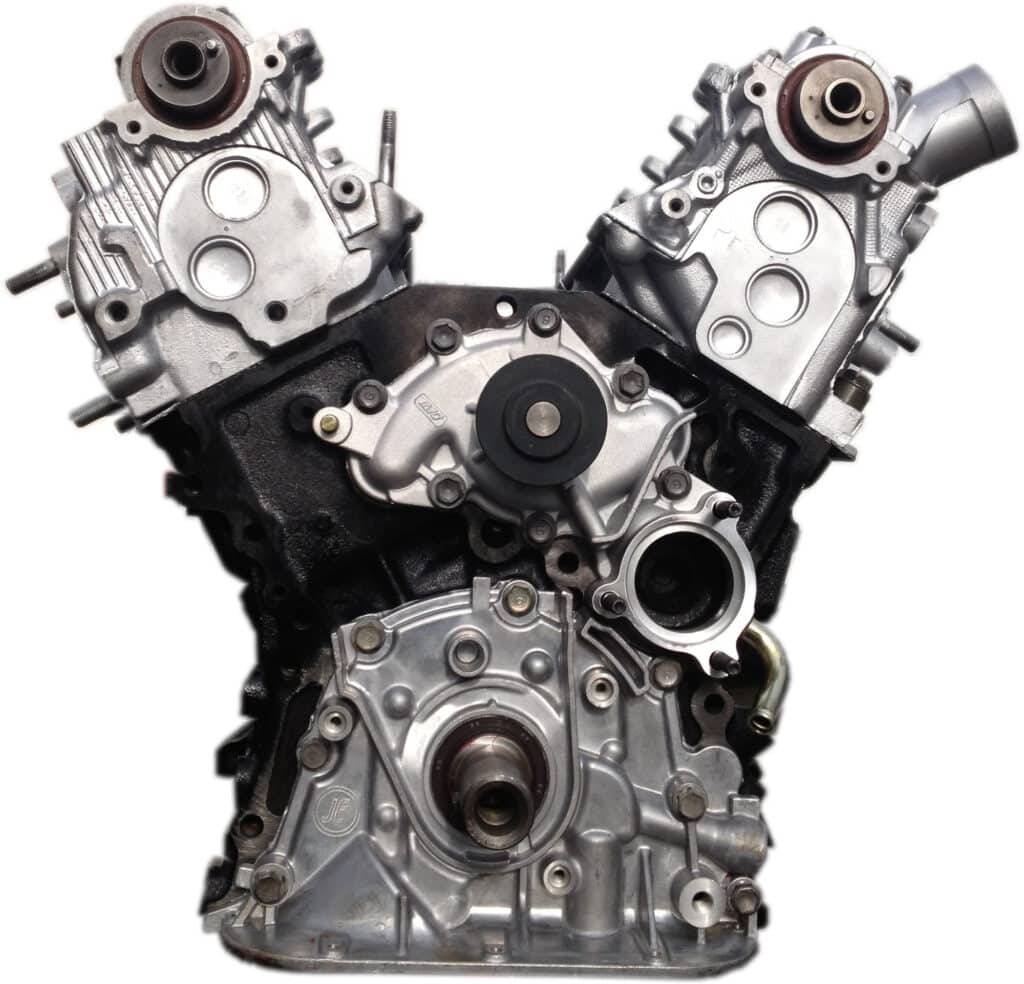
- Engine code: 3VZ-E
- Production: 1988 to 1995
- Layout: Naturally aspirated V6, SOHC, 12-valve
- Displacement: 2,958 cc (3.0L)
- Fuel system: Electronic fuel injection
- Cylinder bore: 87.5 mm
- Piston stroke: 82 mm
- Compression ratio: 9.0 :1
- Power: 145 to 150 hp at 4800 rpm
- Torque: 180 lb-ft at 3400 rpm
- Firing order: 1-2-3-4-5-6
The 3VZ-E engine debuted in 1988, and it could be found in the Toyota 4Runner and the legendary Hilux (sold in North America as the Toyota Pickup) and remained under the hood of those models until 1995.
It was also used in the 1992 to 1994 Toyota T100 — the Toyota Tundra’s predecessor.
The Toyota 3VZ-E uses a cast iron block mated to an aluminum 12-valve head. The SOHC engine produced 145 hp and 180 lb-ft when it was first released, and Toyota eventually bumped up the power to 150 hp.
While those numbers are far from impressive these days, the 3VZ-E was actually on par with similar engines from its era.
However, even back then, 150 hp in a pickup truck or SUV made for an underwhelming experience, and it was hardly a major improvement on the 4-cylinder unit it replaced.
Unfortunately, things got even worse once the Toyota 3.0 V6’s reliability issues began to rear their ugly head.
Despite the 3VZ-E and 3VZ-FE sharing an engine family designation, these two units are vastly different and only have a few parts in common.
It’s important not to confuse them, or expect them to perform similarly or suffer from the same issues. We’ll only discuss the 3VZ-E here.
Due to its low compression ratio and SOHC configuration, the Toyota V6 3.0 engine suffered performance-wise, but since its 180 lb-ft of peak torque arrived at 3,400 rpm, the Toyota T100 could tow up to 5,200 lbs.
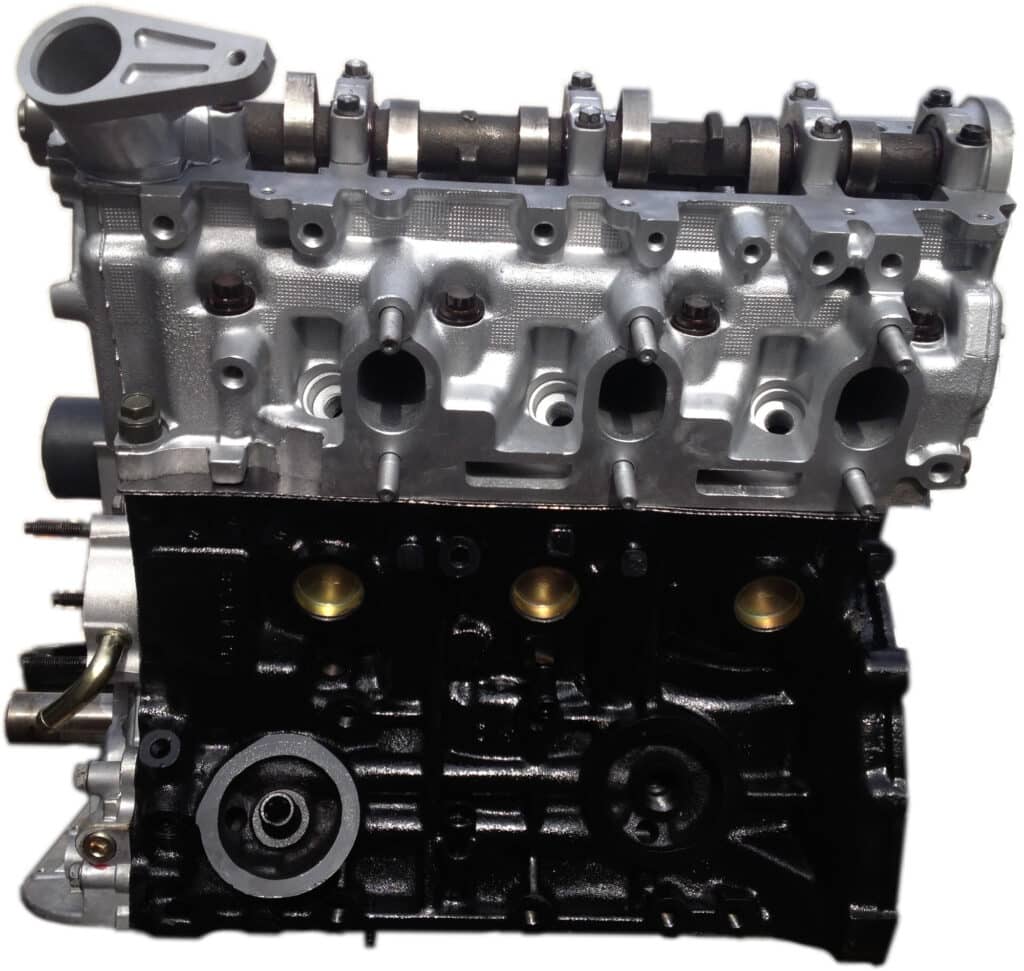
Granted, Toyota’s 3VZ-E engine was never going to compete with the larger American V8 truck engines when it came to performance, however, it did offer better fuel economy, returning around 15 mpg in the city and 20+ on the highway.
Those who’d like to improve the 3VZ-E’s power, torque, and fuel economy will be happy to know that some common mods will achieve this.
Our 1st go-to set of mods would be the basic bolt-ons, such as a short ram or cold air intake, headers, and a catback or axleback exhaust.
This will help the Toyota 3.0 V6 breathe a little better and might improve power and torque, just don’t expect a ton of newfound power.
While some have introduced their 3VZ-E engine to forced induction using either a supercharger or turbo kit, it’s not something we’d recommend due to the engine’s weaknesses.
In our opinion, just giving the Toyota V6 3.0 engine a proper service and tune-up is the only thing that’s worth spending your money on.
Sure, you won’t see any added power, but you’ll probably bring some horses back to life, as engines tend to have a noticeable drop in performance over the years, and it most likely isn’t producing 150 hp anymore.
Change all the filters, pour some fuel system cleaner in the tank, give it a new set of spark plugs, and an oil change using high-quality oil should help restore it to its former glory.
The 3VZ-E’s EGR system is known to fail as well, and some owners choose to remove it by installing an EGR delete kit, also known as a block plate kit. Depending on where you live, this may or may not be legal.

Should you attempt to extract more power from the Toyota V6 3.0 engine? It’s probably not worth it, as it does come with some fatal flaws, and adding power certainly won’t make it more reliable.
Its cast-iron block is certainly strong enough, but it’s used in combination with an aluminum cylinder head, and that causes a severe issue with the 3VZ-E’s head gaskets.
Toyota’s 3VZE 3.0L V6 Problems and Reliability
Is the Toyota 3.0 V6 a good motor? It depends on a few different factors. We’ve already mentioned that it’s underpowered, and adding more power might make it less reliable.
So, is it at least a reliable motor? Again, it depends. Compared to the most reliable Toyota engines, it certainly isn’t, but compared to other brands, it can be considered average.
We also have to factor in that this is now an old engine, and age tends to bring with it more reliability concerns and potential engine problems.
While there are horror stories out there, the 3VZ-E is not as bad as its reputation will have you believe, as proven by the fact that there are still plenty of them roaming around on our roads around 30 years later.
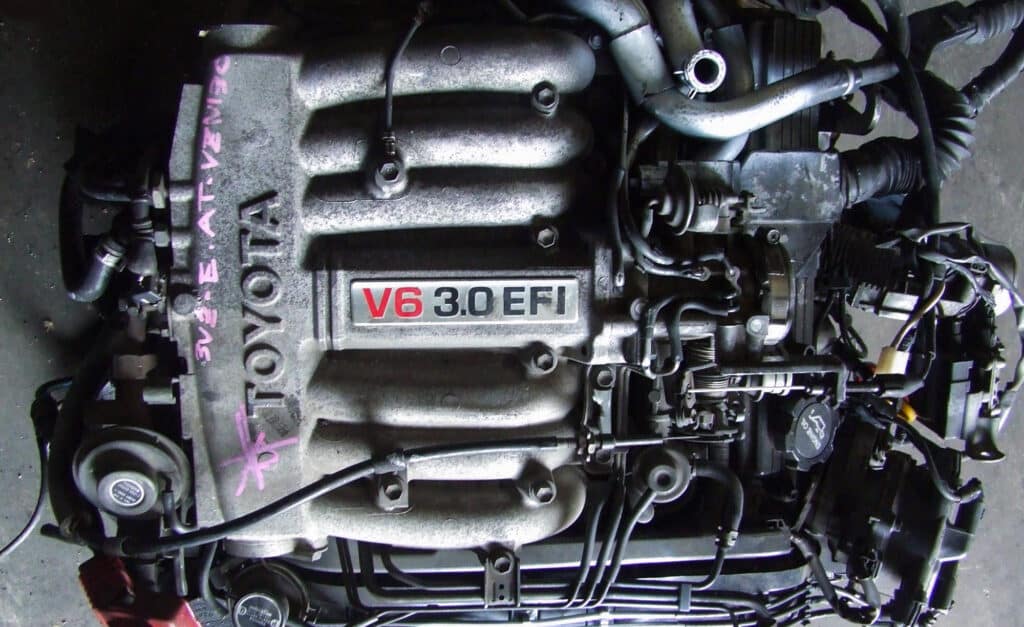
As we mentioned briefly, regular servicing and maintenance are imperative to keep it running.
This isn’t exclusive to the 3VZ-E engine though — any engine of this age will require a certain amount of TLC and patience, and a bit of luck also wouldn’t go amiss.
The first step if you want to ensure the Toyota 3.0 V6 won’t give up the ghost in the foreseeable future is to get your hands on a 3VZ-E rebuild kit.
These kits contain pretty much everything that’s needed to keep your 3VZ-E-powered truck or SUV running, including timing belt, oil pump, water pump, pistons, rings, bearings, and gaskets.
Installing everything is a fairly labor-intensive job though, and paying someone to do it won’t be cheap.
However, if you’re a somewhat capable DIYer, one of these kits will be an affordable way to keep your Toyota V6 3.0 engine running for years to come.
With that in mind, let’s take a closer look at the 3VZ-E’s most common problems — just remember that they might not happen to every 3VZ-E engine out there.
Head Gasket Failure
The head gasket is what seals the gap between the engine block and cylinder head, so it’s critical that this component doesn’t fail.
Back in the “good” old days, asbestos was a common material used in head gaskets as it’s very heat resistant, and that’s a good quality when you need to seal the gap between two different materials.
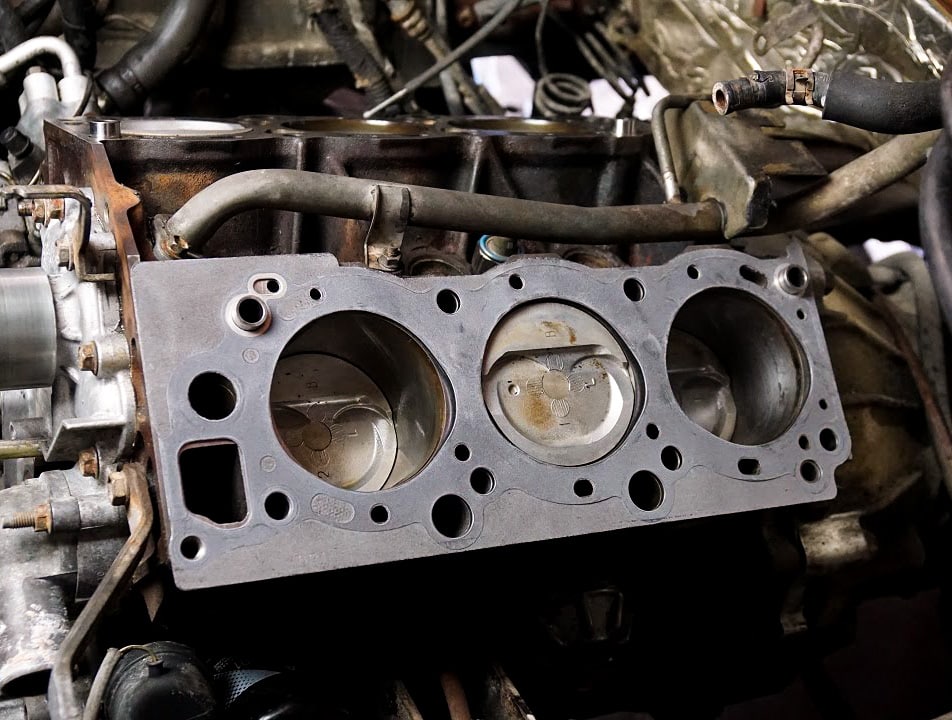
As we know, the 3VZ-E engine had an iron block and aluminum cylinder head, so an asbestos head gasket would do a great job. Unfortunately, asbestos also causes severe health risks, so Toyota made one that didn’t use it.
The carmaker should probably have used more molybdenum on the 3VZE head gaskets to avoid problems, but it’s a very expensive material, and pinching pennies eventually became a costly affair.
It’s no secret that head gasket issues are the most common problems with 3VZ-E engine ownership.
So much so that Toyota ended up extending the cylinder head gasket warranty coverage to 8 years and 100,000 miles.
They would later redesign the 3VZ-E head gaskets, using more molybdenum, more port spacing, and bore grommets.
If you own a Toyota fitted with the 3.0 V6 3VZE engine and it’s had its head gasket replaced after 1997, you don’t need to be too concerned with it failing.
It can still happen, especially since the engine isn’t getting any younger, but at least it’s not because of a design flaw.
Timing Belt Failure
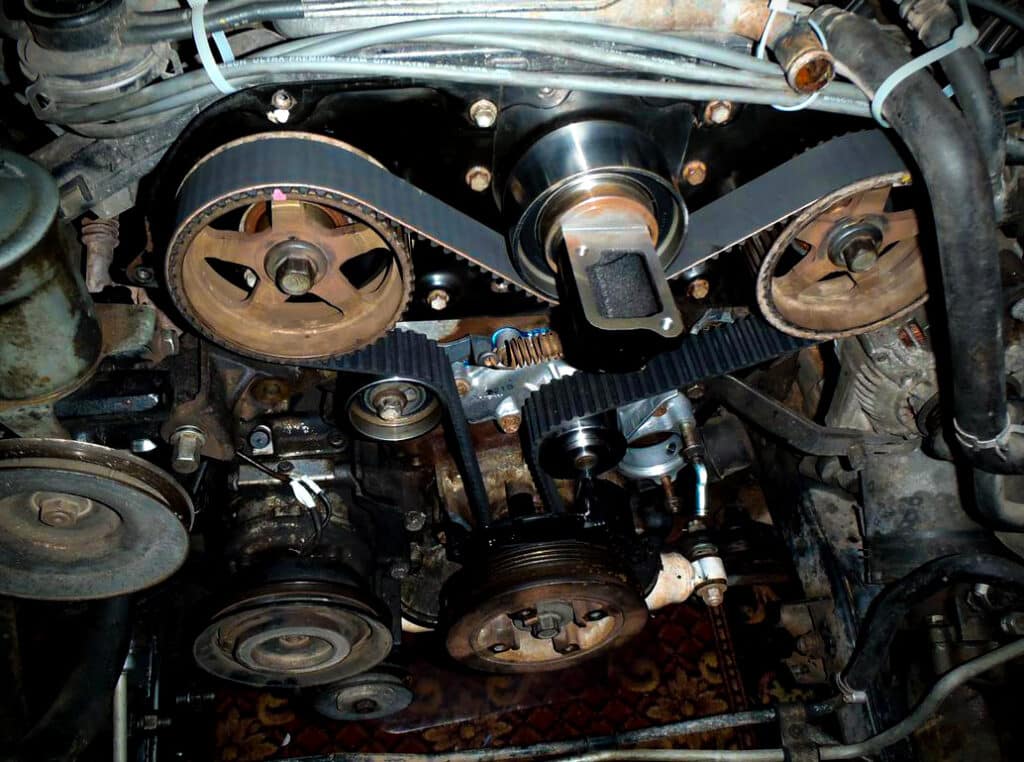
There’s a reason why most modern cars use timing chains — they’re practically maintenance-free, and with a few exceptions, they’ll last the engine’s entire lifetime without needing to be changed.
However, the 3VZ-E is not a modern engine, it’s from the 1980s, and it doesn’t use a timing chain, it has an old-school timing belt.
Unlike timing chains, timing belts do need to be changed, usually somewhere in the region of 80,000 to 100,000 miles.
This isn’t a problem that’s unique to the 3VZ-E engine, it applies to all engines fitted with a timing belt.
Luckily, the 3VZ-E is a non-interference engine, meaning there’s no overlap between the valves and the pistons. So, if the timing belt breaks, you won’t end up with severe engine damage and smashed valves.
Seeing as the water pump is located behind the timing belt, it makes sense to replace both at the same time.
Start Solenoid Problems
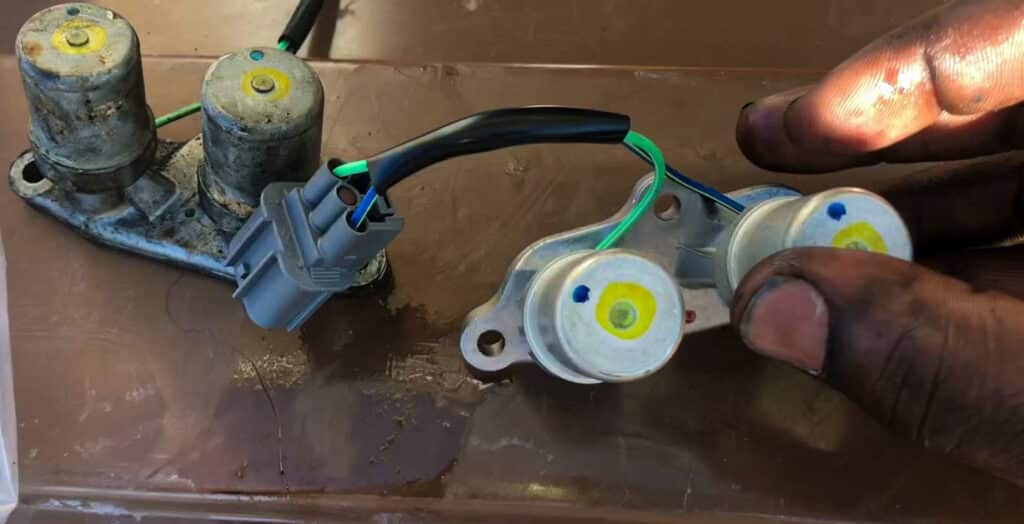
Start solenoids, also known as starter contacts are there to help engage the Toyota 3VZ-E’s starter motor.
Again, it’s not an issue that’s unique to this particular engine, but it is worth mentioning as it’s a common problem.
The solenoid is normally the only part on the starter motor that actually wears out over time, and while replacement parts are affordable, labor costs can be a whole different story.
If you’re pretty capable with the tools, it can be a DIY fix. If not, be prepared to hand over a chunk of your hard-earned cash.
Burnt Exhaust Valves
The final “common” problem with the Toyota V6 3.0 engine is burnt exhaust valves, but it should be noted that this issue is nowhere near as common as the internet forums will have you believe.
It can be difficult to notice burnt exhaust valve symptoms, especially if you have just bought the vehicle.
Using a compression tester is perhaps the easiest way to detect a burnt exhaust valve, as the engine will suffer from some loss of compression when a valve isn’t working as it should.
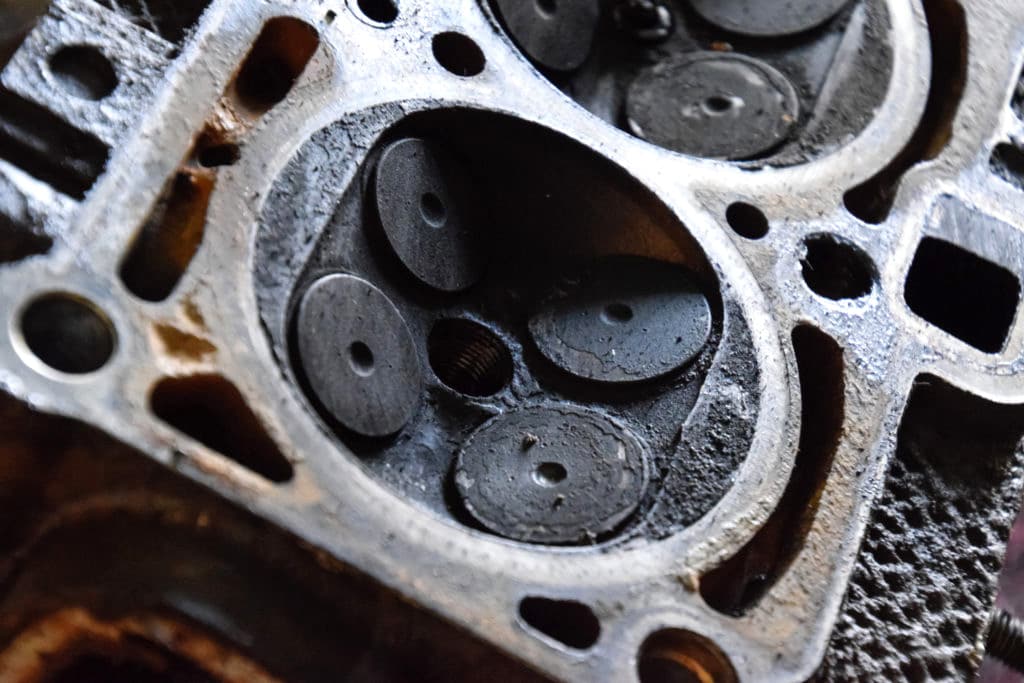
While that may sound simple enough, getting it fixed will most likely cost more than the engine is worth — unless you’re prepared to sort it out yourself.
If you decide to go down the repair route, you may as well consider doing a proper tear-down and rebuild. At least then you’ll have a 3VZ-E engine that should be reliable for years to come.
There are other minor issues you may or may not experience if you own a Toyota vehicle powered by the 3VZ-E engine, but the ones we’ve mentioned here seem to be the ones most people complain about.
It is an old engine, even the last units were made almost 30 years ago, and at that point, pretty much all bets are off.
What we can say is that proper maintenance, patience, TLC, and a bit of luck go a long way to keep a vehicle of this age running.
Final Thoughts
The Toyota 3VZ-E engine isn’t known as one of the most reliable engines that have ever emerged from the land of the rising sun, but it also isn’t as bad as internet rumors will have you believe.
If it’s been well-maintained and looked after, and it’s been fitted with one of the new head gaskets, the Toyota V6 3.0 engine can keep running for many years to come.
It will never be a powerhouse, even if you do decide to throw some aftermarket parts at it, nor will it ever be able to compete with modern truck and SUV engines, but it may just provide you with a cheap runaround that just about gets the job done.
What has your experience been like with the 3VZ-E engine? Let us know by leaving a comment below!
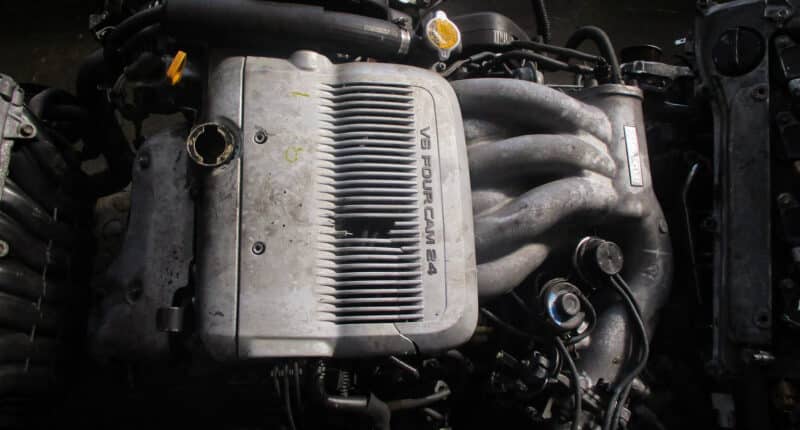
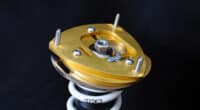
2 comments
I found my 1991 4Runner in 2018 and at 234K the #1 cylinder head gasket failed which managed to pump antifreeze into the plenum through the EGR. The 3VZ-E’s head gaskets’s were FeldPro and the #6 insulator on the spark plug had disintegrated which plugged up the catalytic converter with ceramic bits and caused the heat load to build up in the exhaust system while I was attempting to crest The Grapevine near Castaic City, CA on the interstate. It was a long night for the tow home the next morning at just 99 miles, so AAA was in hand.
Upon investigation and tear down the engine had three sized wrist pins and a spun bearing on one of the conn rods. SO a complete rebuild with new pistons and bearings was completed with new exhaust valves. MLS head gaskets with ARP head studs, DT headers, K&N FIPK and an EGR delete have the motor singing and with 40K on the new engine all is great.
Egr delete, and exhsust crossover delete are a must for the 3VZ..getting rid of that crossover will eliminate the excess heat on cylinder 6..my new 3vz from Yota1 will have both of these..I expect my 89 Hilux to be on the road for years to come.
Who could ask for anything more?….Toyota!